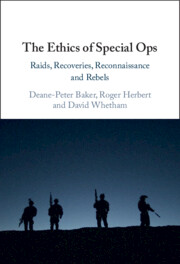288 results
The association between symptom burden and processing speed and executive functioning at 4 and 12 weeks following pediatric concussion
-
- Journal:
- Journal of the International Neuropsychological Society , First View
- Published online by Cambridge University Press:
- 26 January 2024, pp. 1-13
-
- Article
-
- You have access
- Open access
- HTML
- Export citation
4 Extending the 5P Clinical Decision Rule Predicting Concussion Recovery Using an Evidence-Based Assessment Model
-
- Journal:
- Journal of the International Neuropsychological Society / Volume 29 / Issue s1 / November 2023
- Published online by Cambridge University Press:
- 21 December 2023, p. 603
-
- Article
-
- You have access
- Export citation
38 Cognitive and Affective Theory of Mind in Young and Elderly Patients with Multiple Sclerosis
-
- Journal:
- Journal of the International Neuropsychological Society / Volume 29 / Issue s1 / November 2023
- Published online by Cambridge University Press:
- 21 December 2023, pp. 552-553
-
- Article
-
- You have access
- Export citation
Chapter 2 - Raids
-
- Book:
- The Ethics of Special Ops
- Published online:
- 16 November 2023
- Print publication:
- 30 November 2023, pp 30-52
-
- Chapter
- Export citation
Chapter 1 - Introduction
-
- Book:
- The Ethics of Special Ops
- Published online:
- 16 November 2023
- Print publication:
- 30 November 2023, pp 1-29
-
- Chapter
- Export citation
Chapter 5 - Rebels
-
- Book:
- The Ethics of Special Ops
- Published online:
- 16 November 2023
- Print publication:
- 30 November 2023, pp 118-142
-
- Chapter
- Export citation
Chapter 7 - Ethical Armouring for Special Operations Forces
-
- Book:
- The Ethics of Special Ops
- Published online:
- 16 November 2023
- Print publication:
- 30 November 2023, pp 178-217
-
- Chapter
- Export citation
Foreword
-
- Book:
- The Ethics of Special Ops
- Published online:
- 16 November 2023
- Print publication:
- 30 November 2023, pp vi-vii
-
- Chapter
- Export citation
Acknowledgements
-
- Book:
- The Ethics of Special Ops
- Published online:
- 16 November 2023
- Print publication:
- 30 November 2023, pp viii-ix
-
- Chapter
- Export citation
Abbreviations
-
- Book:
- The Ethics of Special Ops
- Published online:
- 16 November 2023
- Print publication:
- 30 November 2023, pp x-xii
-
- Chapter
- Export citation
References
-
- Book:
- The Ethics of Special Ops
- Published online:
- 16 November 2023
- Print publication:
- 30 November 2023, pp 218-230
-
- Chapter
- Export citation
Index
-
- Book:
- The Ethics of Special Ops
- Published online:
- 16 November 2023
- Print publication:
- 30 November 2023, pp 231-234
-
- Chapter
- Export citation
Chapter 3 - Recoveries
-
- Book:
- The Ethics of Special Ops
- Published online:
- 16 November 2023
- Print publication:
- 30 November 2023, pp 53-79
-
- Chapter
- Export citation
Copyright page
-
- Book:
- The Ethics of Special Ops
- Published online:
- 16 November 2023
- Print publication:
- 30 November 2023, pp iv-iv
-
- Chapter
- Export citation
Contents
-
- Book:
- The Ethics of Special Ops
- Published online:
- 16 November 2023
- Print publication:
- 30 November 2023, pp v-v
-
- Chapter
- Export citation
Chapter 4 - Reconnaissance
-
- Book:
- The Ethics of Special Ops
- Published online:
- 16 November 2023
- Print publication:
- 30 November 2023, pp 80-117
-
- Chapter
- Export citation
Chapter 6 - Not Quite War
-
- Book:
- The Ethics of Special Ops
- Published online:
- 16 November 2023
- Print publication:
- 30 November 2023, pp 143-177
-
- Chapter
- Export citation

The Ethics of Special Ops
- Raids, Recoveries, Reconnaissance, and Rebels
-
- Published online:
- 16 November 2023
- Print publication:
- 30 November 2023
Hereditary haemorrhagic telangiectasia and SMAD4 mutation in a patient with complex single ventricle heart disease
-
- Journal:
- Cardiology in the Young / Volume 33 / Issue 12 / December 2023
- Published online by Cambridge University Press:
- 09 October 2023, pp. 2667-2669
-
- Article
- Export citation
Incidence of SARS-CoV-2 infection and associated risk factors among staff and residents at homeless shelters in King County, Washington: an active surveillance study
-
- Journal:
- Epidemiology & Infection / Volume 151 / 2023
- Published online by Cambridge University Press:
- 10 July 2023, e129
-
- Article
-
- You have access
- Open access
- HTML
- Export citation



